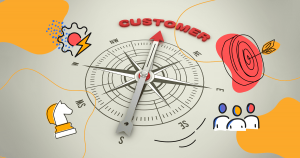Search engine optimization (SEO) is imperative for your online store to gain traction and be successful.
While you can purchase ads, SEO is free. Sure, it takes time and effort on your part to make it work, but the long-term results are well worth it.
In this context, WooCommerce — one of the most SEO-friendly options for starting your own store — is an open-source eCommerce plugin that is designed to work with WordPress.
If you have chosen to go the WooCommerce route, then you need to ensure your store is optimized for SEO.
SEO in and of itself is an ongoing process, so what do you need to do to rank your WooCommerce website higher in the search engine rankings?
Let’s check out some top WooCommerce SEO tips below.
1. Perform the WordPress SEO Setup
Due to the fact that WooCommerce is a plugin for WordPress, you will need to ensure you have taken the time to perform the SEO setup for WordPress.
Otherwise, you won’t be able to move forward with certain SEO tactics with WooCommerce.
For starters, you will need to install an SEO plugin like Yoast SEO or the All-in-One SEO plugin. Fill out the basic details within the plugin. This will get you started down the right path.
2. Write Meta Descriptions
It isn’t uncommon for people to overlook meta descriptions.
However, they are a free piece of descriptive information given to Google about your website that can help your page rank higher in the SERPs. They can also help increase your click-through rate (CTR).
The meta description is that small piece of information that appears underneath the page title in search results.
If you do not add a meta description, Google generally pulls the first bit of information on the page.
In your meta description, which should not be longer than 160 characters, you should include important adjectives, motivational words, and calls-to-action.
Focus on what will make people click on your link.
3. Write the Right Product Title
Your product titles must be relevant and SEO-friendly. These are among the first things that search engine crawlers will utilize.
When a search term is entered into Google, Google will return results that have that term in the product title and SEO page title.
So, when creating the right product title, make sure it is unique, accurate, and relevant. Don’t forget to ensure that the product title is not the same as the page title.
4. Optimize Page Titles
When creating your page titles, it is imperative that your main keyword for that page be included.
Work in as many descriptive keywords as you can, but make sure it sounds natural. These titles are for your customers, so they need to make sense while still being SEO-relevant.
5. Enable Breadcrumbs
When enabled, breadcrumbs have the potential to improve the overall user experience on your website while also helping you rank higher in the SERPs.
So, what are breadcrumbs? If you’re unfamiliar, breadcrumbs are the links/words that appear at the top of your website page. It is basically a site path or trail of how you got to where you are on.
An example of a breadcrumb is: Men’s Clothing > T-Shirts > Fatherhood
So, if a web visitor is on the “Fatherhood” page, the breadcrumbs make it easy for them to return to the previous “T-Shirts” page.
6. Use Proper Product Categories and Tags
When it comes to keeping things organized, it all comes down to the categories and tags you use.
This is not only useful for you, but it can prove to be beneficial in the navigation of the site by your customers. Oh, and it helps search engines too.
Consider this. If you have 1,000 shirts for sale on your website and your customer wants to find a green Star Wars shirt, it may be difficult. If it is too difficult, the shopper may leave the website and go to another site where it is easier to locate what they want.
This is where categories and tags come into play. Keep in mind that categories are much broader than tags. Tags allow you to include specific details about your product.
For example, a category may be “Men’s T-Shirts,” whereas a tag may be “Fatherhood”.
7. Add Full Product Descriptions
Your product descriptions are treated like any and all other content on the website.
Therefore, you want to create a detailed and unique product description with relevant keywords, as this will help you rank your products on Google.
If your description simply contains the product name, then you are not helping your overall SEO efforts.
Take the time to describe your product with as many details as possible, including model numbers, serving sizes, shirt sizes, ingredients, fabric types, etc.
The more information shoppers have at their disposal, the more likely they are to be enticed to make a purchase.
Further, when creating a product description, aim for about 300 words. Use bullet points whenever possible, as this makes the content easily scannable.
Try to use your most relevant keywords two to three times each throughout the entire product description.
8. Avoid Duplicate Descriptions and Content
When creating your product descriptions and web content, you need to ensure the content is 100% unique.
While you can use the descriptions provided to you by the manufacturer (if relevant), it won’t benefit your SEO efforts. Unique descriptions written by you or a professional will.
Further, when you create your own descriptions and content, you can optimize the content with relevant keywords for SEO purposes.
If you currently have content on your website, use a tool to detect duplicate content. If any is found, this content needs to be eradicated immediately.
Pay attention, though, as you have more than one URL that has similar and duplicate content, make sure that you keep the better performing page and remove the other.
Just make sure that you keep all the important information from both pages and consolidate it into a single page.
9. Use Broken Link Checker
Broken Link Checker is a plugin that will scan all of your content looking for potentially broken links.
A broken link is a link that goes nowhere once it is clicked on. This may be due to a typo in the link or a page that is no longer available.
Bad links like this can result in a drop in the search engine rankings. By using this plugin to find and fix bad links on your site, you will improve both the user experience and SEO.
10. Optimize Website Description, Speed, and Performance
It has been said multiple times throughout this blog: descriptions should be detailed, relevant, and SEO-friendly. This pertains to your website description as well.
Website speed is one of the most crucial ranking factors that Google takes into consideration.
Therefore, the faster your website is, the higher you are likely to rank in the SERPs. Plus, a slow website is not good for business, since it costs you money and impacts the user experience.
It only takes a second delay in the loading of your page to result in fewer page views, reduced customer satisfaction, and loss in conversions.
11. Make Site Navigation Simple
Site navigation has a direct impact on the amount of time a person spends on your website as well as the bounce rate.
The more time people spend on your website, the higher you are likely to rank in the SERPs.
Your primary navigation should be easy, clean, and straightforward. If it is confusing, people will leave.
A simple navigation system on your website will improve the user experience and customer satisfaction.
The main navigation consists of the homepage and any links to important pages. Any links on the home page are considered more important than others by Google.
Consider adding links to the footer of the home page. This will ensure you are linking to those important pages while also making it easy for your visitors to locate the information they need.
12. Improve Website Security
Search engines and customers love a website that is safe and secure. Google will warn web visitors if there is any risk of malware, phishing, or scams.
If your website is marked with this warning, you are going to lose business and your brand reputation is going to take a significant hit. In fact, it may end your business completely.
Therefore, make sure to take the necessary steps to secure your website.
This includes having a valid SSL certificate installed, which will inform web visitors and search engines that your website is safe to browse.
13. Track WooCommerce Customers in Google Analytics
Your SEO strategy must include gathering and analyzing data.
This will allow you to learn more about your customers, such as:
- Where they came from.
- How they stumbled upon your website.
- Which products they looked at.
- How long they spent on your website.
This information can easily be tracked with Google Analytics. There are WordPress plugins that can be used to gather the data you need quickly, easily, and accurately.
You can then make data-driven decisions confidently and grow your business.
The aforementioned tips will help you get your eCommerce store off the ground with WooCommerce.
However, it is important to understand that SEO is not a one-and-done thing. You must continually work at WooCommerce SEO to grow your business.
Since website speed is so crucial to the overall user experience and your ranking in the SERPs, check out how to improve your website speed and gain more sales.

![[WA] Ultimate Content Marketing Kit](https://rockcontent.com/wp-content/uploads/2022/08/Content-Marketing-Kit-750x200px.jpg)








